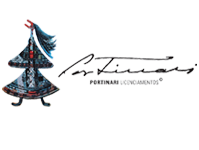Mentioned By21
General Info
Title
Tiradentes
Description
Composition in blue, violet, lilac, gray, white, earthy, ochre, rose, yellow, green, red, black and orange tones. Smooth texture. Elements of the composition constructed by overlapping and juxtapositions of colored geometric shapes, regular and irregular. Misshapen stains of color, transparencies contrasting with compact colored and opaque areas, bright light even in the darkest areas characterizes the composition. At some points, the light tones, carefully distributed, alleviate the weight of dark shades. In others, the light shades are used in striking contrast to the dark. Additional features: verticality obtained by standing figures, arranged side by side, forming blocks; distributed poles; division of the three screens; vertical color areas. Absence of contour lines and movement, with static pictures arranged in groups that make up forms. The subject of the development is carried visually in the same spatial plane, with temporal and spatial scenes taking place at distinct times and places; it is all represented side by side. Narrative and didactic composition. In addition to knowledge of historical fact, which makes it possible to identify the scenes as distinct and temporal succession, there is the sharply diagonal composition of each of them and the colors change from one scene to the other. First scene: the conspirators plotting and chained women symbolizing the Brazilian nation under the reign of the metropolis. At the center, a group of men standing and facing forward, we see the whole body of the two in front and, behind them, four faces with defined facial features. The first on the left is Tiradentes, represented with the lieutenant's uniform of the 6th Dragoon Regiment of Vila Rica. He has no beard and no mustache, hair up and hands on the waist holding a thick chain. To the right is José Álvares Maciel reading a book held in front of his face. The group forms a triangular area whose upper vortex is formed by the heads of the other components. To the left of the group, cut at the side edge of the support, group of women standing, facing right, looking up. Two are represented in whole body facing forward, hands on face and hair forward, wth a chain hanging from hands of one of them. Of the other group members, we see only the heads. Following the diagonal line that delineates the first scene, another group of chained women with hands on faces and long hair hanging forward. Beside them, four black children, also wrapped in chains and a small chest t on the ground. Behind the first two groups, three high poles and representation of mountains in the background. Second scene: it separates the previous scenes by pointing diagonally to the left, this scene is the reading of the sentence of the conspirators. The conspirators group is concentrated on the left, with facial features slightly indicated, heads and bright faces in light shades of rose, blue, yellow and green. Ahead of the old group is Rezende Costa, chained, head down, held by his son, who holds him. In the center, Tiradentes with mustache, beard and long hair, violet shirt, dark-colored pants and boots. Standing with arms crossed, face lit on the right and dark on the left, head turned 3/4 to the right, toward group composed of bailiffs, headed by Judge Francisco Luiz Alves da Rocha, represented by the first figure of the group, almost back, in tails and holding in his hands a paper with the court's ruling. This scene takes place in the chapel room of the chain, whose walls are represented by geometrical colored shapes. That's the only scene with no poles represented. Third scene is the hanging of Tiradentes in the Field of Saint Domingo on April 21st, 1792. Serving as background for the scene the body of Tiradentes hanging on the gallows, mounted on high quadrangular gallows, with stairs on the right. Around the jib, regiment forming triangular area, with the figures that make up the base of the front triangle wearing the Moura regiment uniform. Representation of different groups attending the hanging: the bottom, forming a human wall, is a crowd represented in bright shades of rose, blue, green, gray and white; on the left, in front, a group of people standing, wearing costumes of the nobility of the time, with two thirds of this group in the shade, indicated by two triangles in dark tones and the remaining group under triangularly-lit area, with some emphasis on heads, one facing the gallows and the other looking back. To the right of this group, two women kneeling in front: one crying, hands on face and hair hanging forward and the other looking to comfort her. Behind the women, group of men standing back, facing the gallows, also wearing noble costumes. Fourth scene represents the quartering of Tiradentes and is separated from the previous scenes by diagonal dial to the right. In the center foreground, the dismembered body of Tiradentes, held by thick rope to a pole stuck in dais. The head is on the dais, facing below the spoils and blood stains around it. Around the dais, figures of people with expressive face, alternating in areas of light and shadow. On the second and third planes, on the left and on the right groups of people who build areas in rose and blue and on the left areas in blue and, on the right, in white. High poles scattered among the crowd and mountains in the background. Fifth scene: shows the distribution of Tiradentes quarters. Amid the representation of the hilly landscape of Minas, four poles arranged in front of the diagonal to the bottom and from the left to the right, with the body parts of the martyr nailed on top. Compounding the rest of the scene: geometrized floor in bright color, with stylized vegetation; five vultures on wooden log and three other resting on the ground; dispossessed group between the second and third poles and further back, smaller group of people, only indicated. Sixth scene is the emancipation of the Brazilian nation, through the group of women raising broken chains. To the left of center of the scene is a high pole, on which there is a niche with the head of Tiradentes. To the left of the pole, a group of five people embraced, conveying pain, lead a woman sitting with a child on her lap. Behind the pole, a group of people only outlined make up an area in blue. On the far right of the composition, a group of women standing and facing with heads represented like the personification of freedom; the figure in front has arms raised, suggesting to have broken a chain whose links fall to the ground, symbolizing the motto "Freedom, even late."
Location Created
Award
"This work was awarded the Gold Medal for Peace at the Second World Congress of Defenders of Peace in Warsaw, Poland, in 1950."
Author
About
Themes
Function
Artwork Function
Executed toArtworkFunctionType
Artwork Function Description
Work executed to decorate the entrance hall of the Cataguases School in Cataguases, MG, which was owned by Francisco Inácio Peixoto and designed by architect Oscar Niemeyer.
Support and Technique
Authenticity
Preservation Number
Obra tombada sob o nº PG 21.337.
Collection
Collection
Dimensions
Height (cm)
309
Width (cm)
1767
Signature and annotation
Annotation
Signed and dated in bottom left corner "CANDIDO PORTINARI RIO 1948-1949"
Relations
Related Document914
Related Event17















